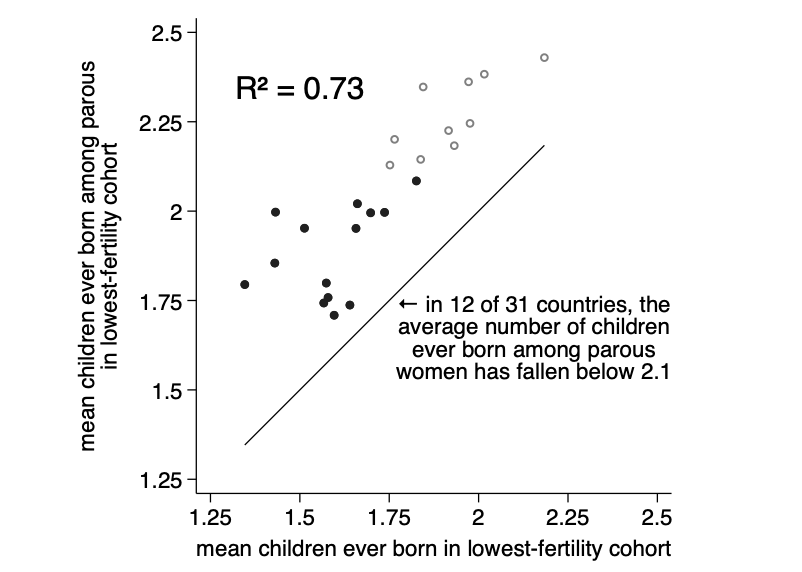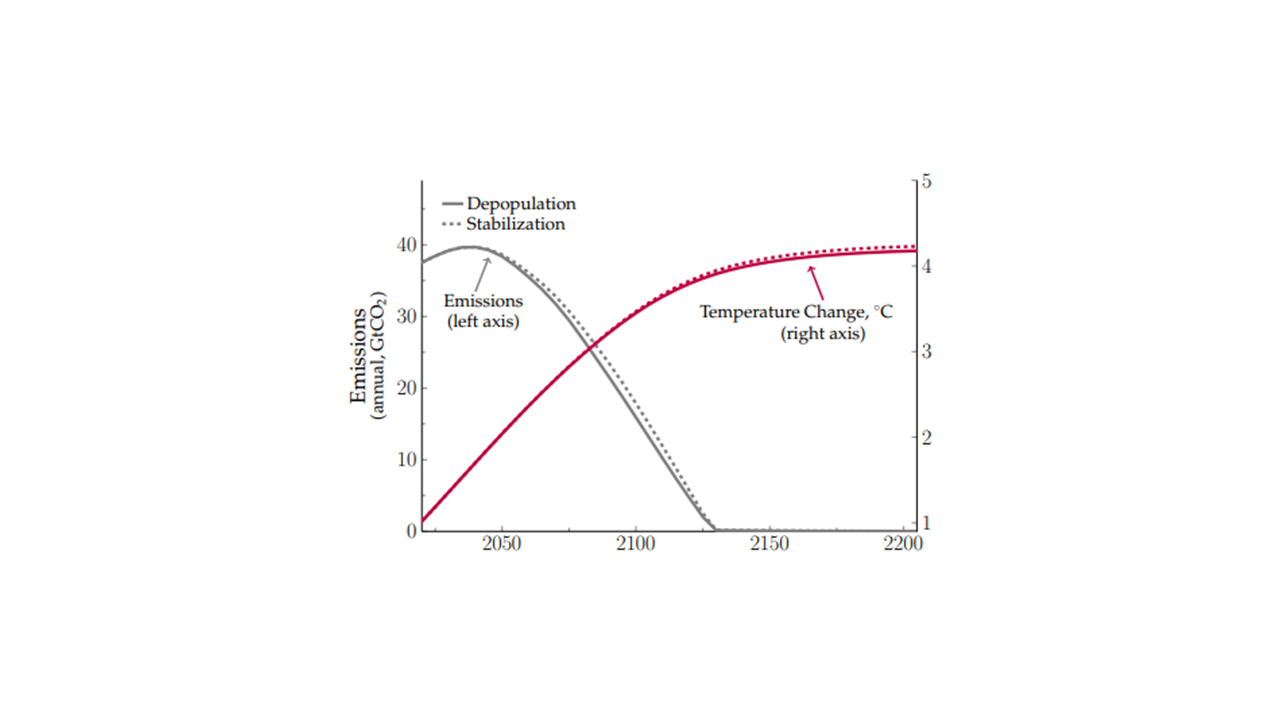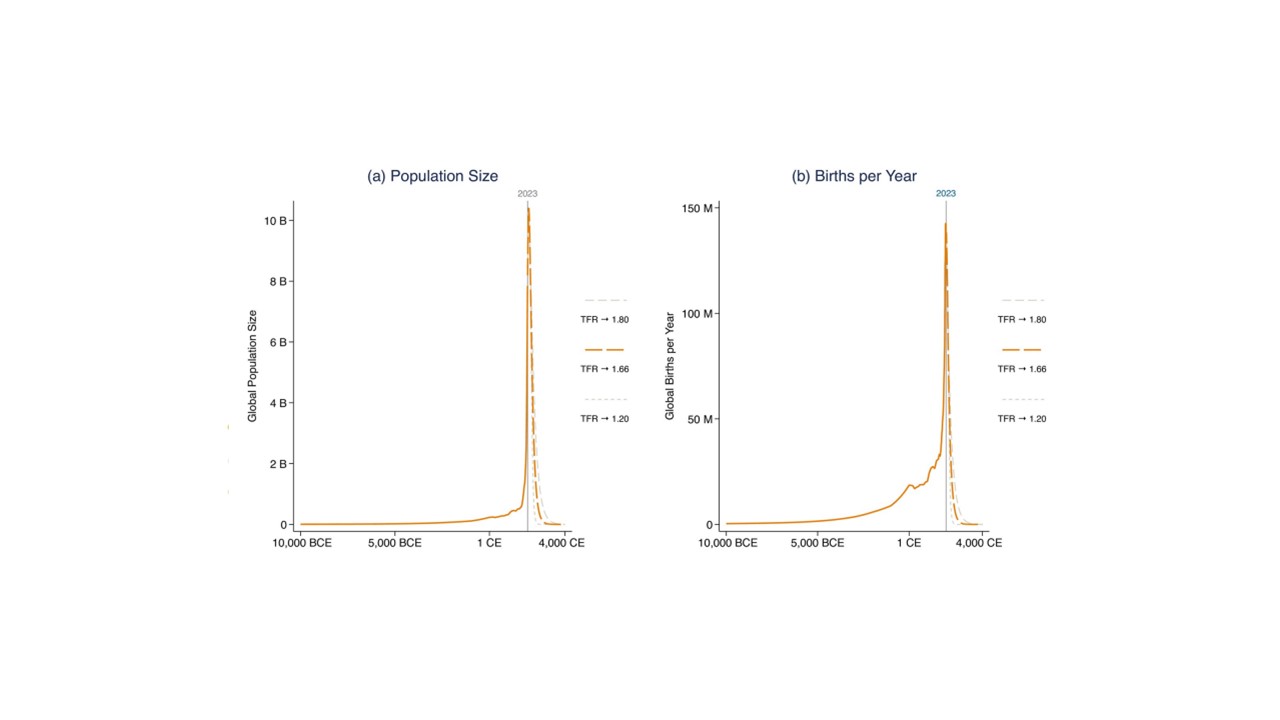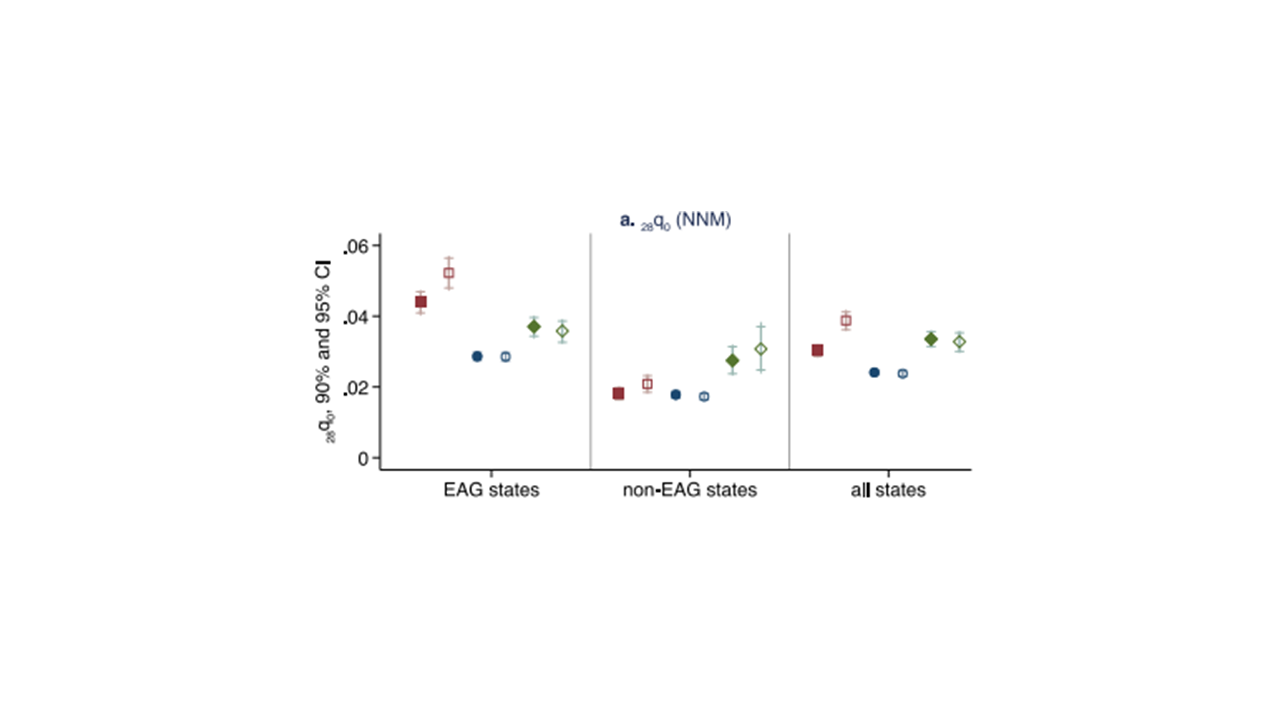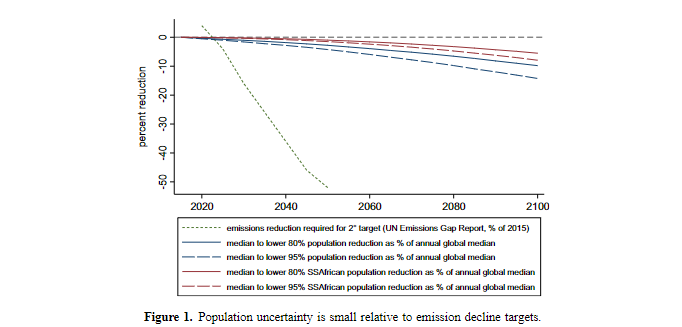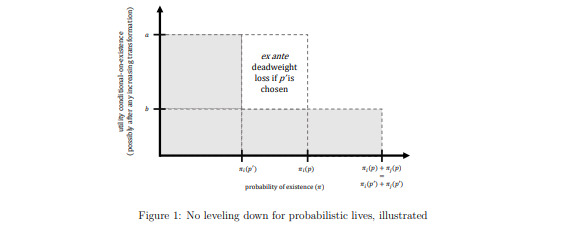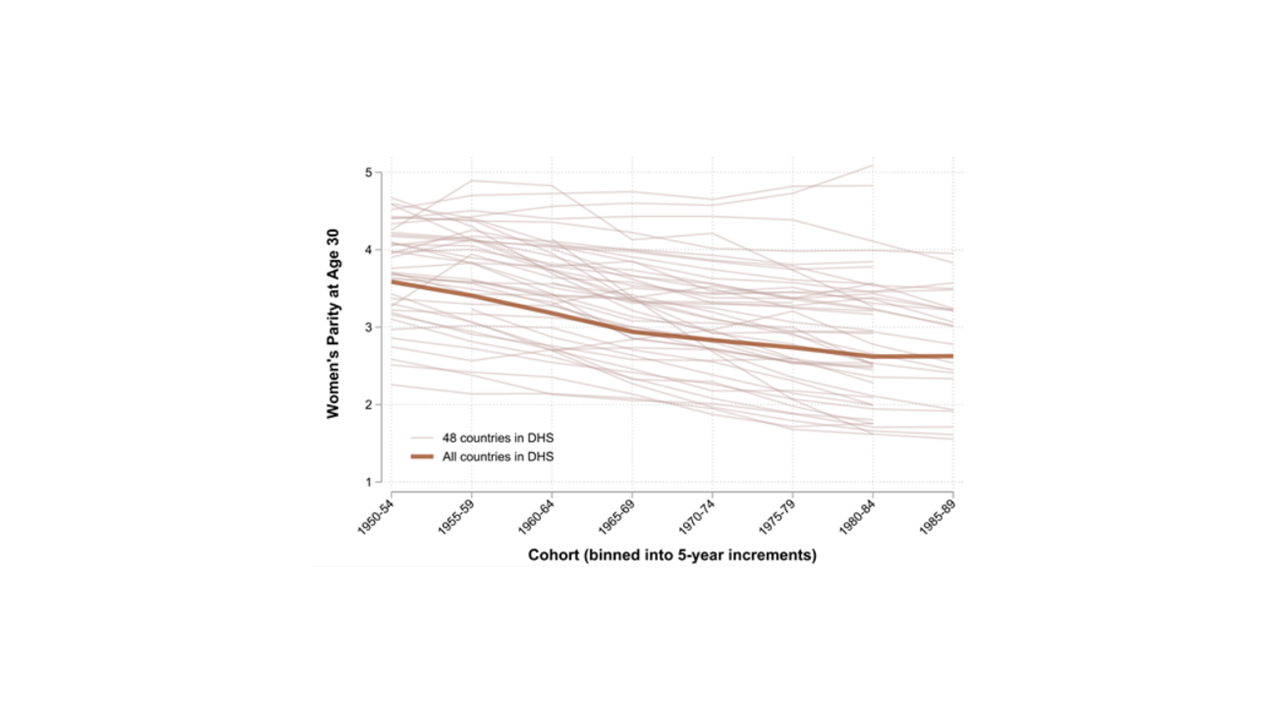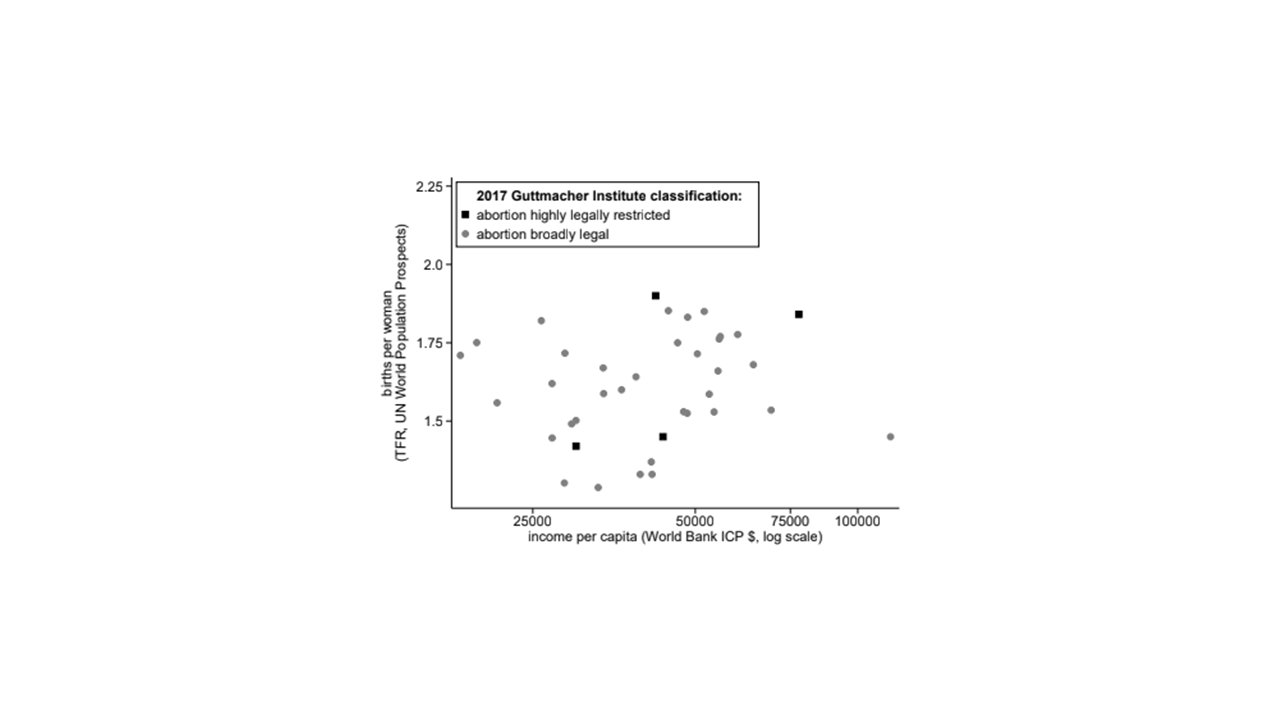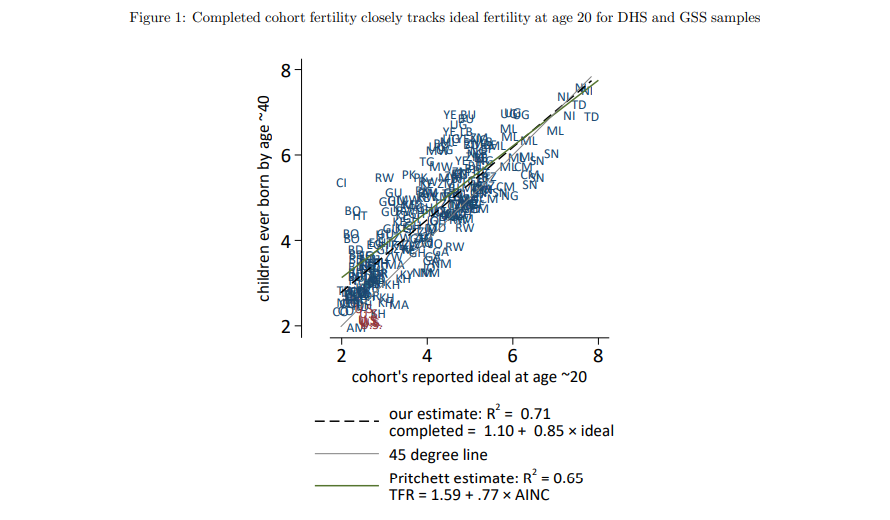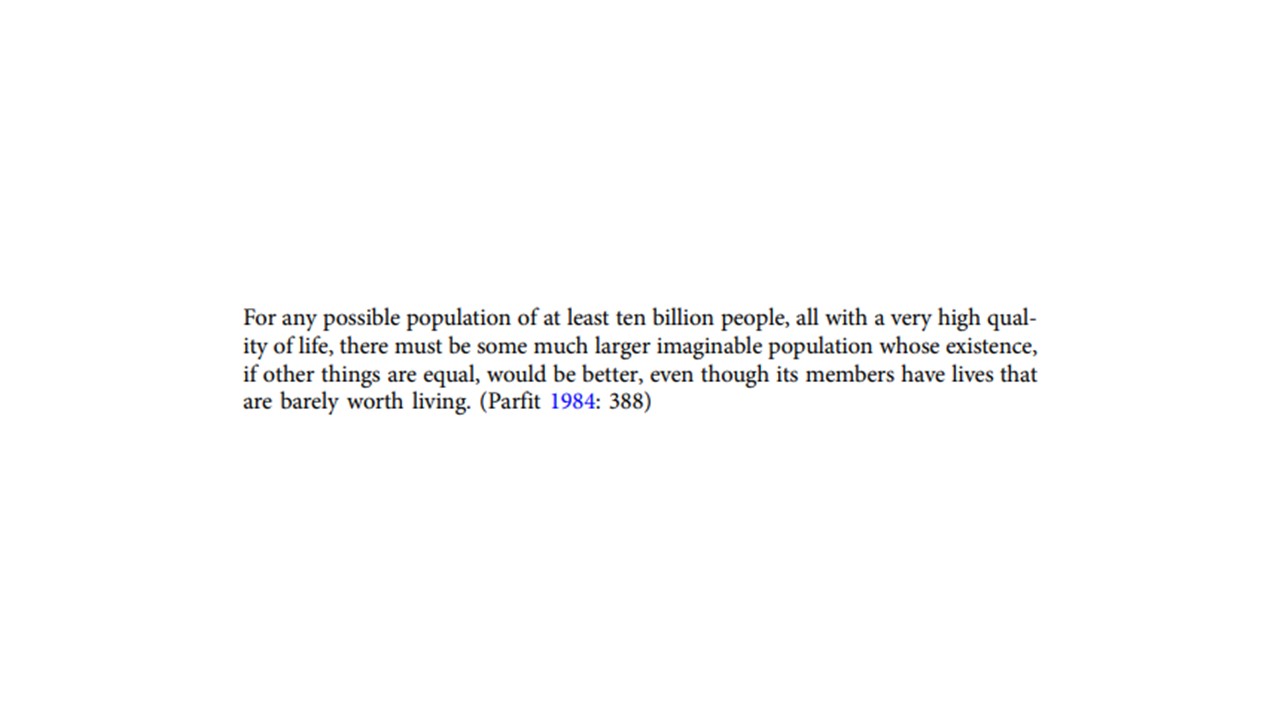Falling birth rates can be decomposed into two components: (1) an increase in childlessness (i.e., lifetime nulliparity), and (2) fewer children ever born to women who have at least one child (completed cohort fertility among the parous). This paper quantifies the contributions of these two components for women in advanced economies in Europe, North and South America, and southeast Asia, and for recent cohorts in Indian districts.
Related Research for After the Spike
Related Research for After the Spike
Is less really more? Comparing the climate and productivity impacts of a shrinking population
Presented at National Bureau of Economic Research 2023 Fertility Conference; this paper subsumes “A Quantitative Assessment of the Climate Benefits and Economic Costs of a Smaller World Population.”
Long-term population projections: Scenarios of low or rebounding fertility
The size of the human population is projected to peak in the 21st century. But quantitative projections past 2100 are rare, and none quantify the possibility of a rebound from low fertility to replacement-level fertility. Here we provide updated long-term cohort-component population projections and extend the set of scenarios in the literature to include scenarios in which future fertility (a) stays below replacement or (b) recovers and increases.
Excess neonatal mortality among private facility births in rural parts of high-mortality states of India: Demographic analysis of a national survey
We ask how early-life mortality in the rural population of the EAG states and the rest of India differs according to the setting of birth. We consider whether quality of care can help explain the differences we find.
Near-universal marriage, early childbearing, and low fertility: India’s alternative fertility transition
Although fertility in India has declined to levels similar to HICs, women’s entry into marriage and initiation of childbearing are more in line with patterns found in LMICs.
Utilitarian benchmarks for emissions and pledges promote equity, climate and development
Tools are needed to benchmark carbon emissions and pledges against criteria of equity and fairness. Here we propose a utilitarian benchmark computed in a transparent optimization framework, which could usefully inform the equity benchmark debate.
Population ethics and the prospects for fertility policy as climate mitigation policy
In this paper, we review evidence from population science, in order to inform debates in population ethics that, so far, have largely taken place within the academic philosophy literature.
Foundations of utilitarianism under risk and variable population
Utilitarianism is the most prominent family of social welfare functions. We present three new axiomatic characterizations of utilitarian (that is, additively separable) social welfare functions in a setting where there is risk over both population size and the welfares of individuals.
Egyptians, aliens, and okies: Against the sum of averages
Grill (2023) defends the sum of averages view (SAV), on which the value of a population is found by summing the average welfare of each generation or birth cohort. A major advantage of SAV, according to Grill, is that it escapes the Egyptology objection to average utilitarianism. But, we argue, SAV escapes only the most literal understanding of this objection, since it still allows the value of adding a life to depend on facts about other, intuitively irrelevant lives.
Intergenerational transmission is not sufficient for positive long-term population growth
Although different models of fertility transmission across generations reach different conclusions, depopulation is likely under any model if, in the future, even higher fertility subpopulations prefer and achieve below-replacement fertility.
Equilibrium effects of abortion restrictions on cohort fertility: Why restricting abortion access can reduce human capital, social welfare, and lifetime fertility rates
The United States Supreme Court’s ruling in Dobbs v. Jackson Women’s Health Organization has made understanding the impact of abortion laws increasingly important and timely. We investigate recent claims by policymakers that abortion restrictions increase birth rates; we also evaluate consequences for human capital and women’s welfare.
Do fertility preferences in early adulthood predict later average fertility outcomes of the same cohort?: Pritchett (1994) revisited with cohort data
Pritchett (1994) influentially examined the relationship between survey-reported ideal fertility and period total fertility rates. Pritchett’s analyses found that country-period by country-period differences in fertility preferences could statistically account for the majority of the variation in period total fertility rates. This result was impactful because it suggested that preferences, rather than constraints such as contraceptive access, explain fertility outcomes.
Fiscal externalities and underinvestment in early-life human capital: Optimal policy instruments for a developing country
We study policy instruments to correct inefficiently low investment in maternal nutrition in India, where one-fifth of all births occur.
What doesn’t kill you makes you poorer: Adult wages and early-life mortality in India
A growing literature indicates that effects of early-life health on adult economic outcomes could be substantial in developing countries, but the magnitude of this effect is debated. We document a robust gradient between the early-life mortality environment to which men in India were locally exposed in their district and year of birth and the wages that they earn as adults.
Repugnant conclusions
The population ethics literature has long focused on attempts to avoid the repugnant conclusion. We show that a large set of social orderings that are conventionally understood to escape the repugnant conclusion do not in fact avoid it in all instances.
What should we agree on about the Repugnant Conclusion?
The Repugnant Conclusion served an important purpose in catalyzing and inspiring the pioneering stage of population ethics research. We believe, however, that the Repugnant Conclusion now receives too much focus. Avoiding the Repugnant Conclusion should no longer be the central goal driving population ethics research, despite its importance to the fundamental accomplishments of the existing literature.
